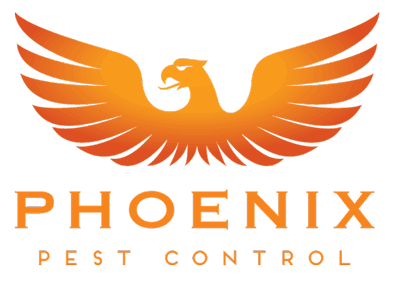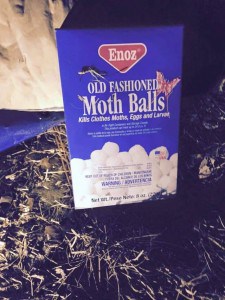Tip of the week: #whatbugsme
mothballs are dangerous and not effective
The key ingredient in moth balls is naphthalene, a widely-used and highly-manufactured chemical. The Environmental Protection Agency (EPA) has classified naphthalene as a persistent, bioaccumulative and toxic (PBT) chemical. [2] A PBT does not readily break down in the environment, does not easily metabolize, and may be hazardous to human health or the environment. The EPA has also classified naphthalene as a high priority PBT chemical.
Naphthalene enters the human body through inhalation or passing through the skin. Exposure to large amounts of naphthalene may damage or destroy red blood cells. Some symptoms include fatigue, lack of appetite, restlessness and pale skin. Exposure to large amounts of naphthalene may also cause nausea, vomiting, diarrhea and blood in the urine. [3] What mothers-to-be inhale, so does baby: the developing bodies of unborn children are especially susceptible to naphthalene poisoning.
Naphthalene is an incredibly dangerous chemical. A Material Safety Data Sheet (MSDS) is a listing of chemicals and their dangers required by the Occupational Safety and Health Association (OHSA) to be included by any “chemical manufacturer or importer.” MSDS’s on naphthalene warn that naphthalene is harmful if swallowed or inhaled, causes irritation to skin, eyes and respiratory tract, and may affect liver, kidney, blood and central nervous system. Furthermore, MSDS’s state that inhalation of dust or vapors can cause headache, nausea, vomiting, extensive sweating and disorientation. The predominant reaction is delayed intravascular hemolysis (the dissolution of red blood cells) with symptoms of anemia, fever, jaundice, and kidney or liver damage.
Another key ingredient in some brands of moth balls is para dichlorobenzene (PDB). According to a chemical profile listing of PDB conducted by Cornell University, PDB is has an acute (high) toxicity, and people who were exposed to PDB to a prolonged length of time developed anorexia, nausea, vomiting, weight loss, as well as death. [4]
As stated previously, naphthalene does not break down in the environment; moth balls used outside wear away to seep right into the ground water. Since water treatment plants do not remove PBT’s, the use of moth balls outside contributes to a poisoning of our drinking water. Furthermore, water used on farms and vegetable gardens may include PBT’s.
Not only is naphthalene hazardous, it is one of the most unnecessary chemicals manufactured. There isn’t anything that naphthalene accomplishes that we cannot do without. What began as an effective way to kill moths has blossomed into a widely-used means of repelling other pests.
If you have moth balls in your house, get rid of them. If your business, school or day care uses moth balls, have them discontinue their use; do not continue to be subjected — yourself as well as others – especially children – to this poisoning. Moth Balls, however, shouldn’t merely be tossed into a garbage can, but need to be sealed in a plastic bag, and the package double-sealed such as setting it inside a coffee can that can be taped tightly shut. It’s not only your responsibility to protect yourself from moth ball poisoning, but others as well. Besides, at the end of the day they do not work anyway so why take the risk?
Thanks for the pic and the idea jerry.
-Aaron Veal ACE
PhoenixPestControlTN.com

